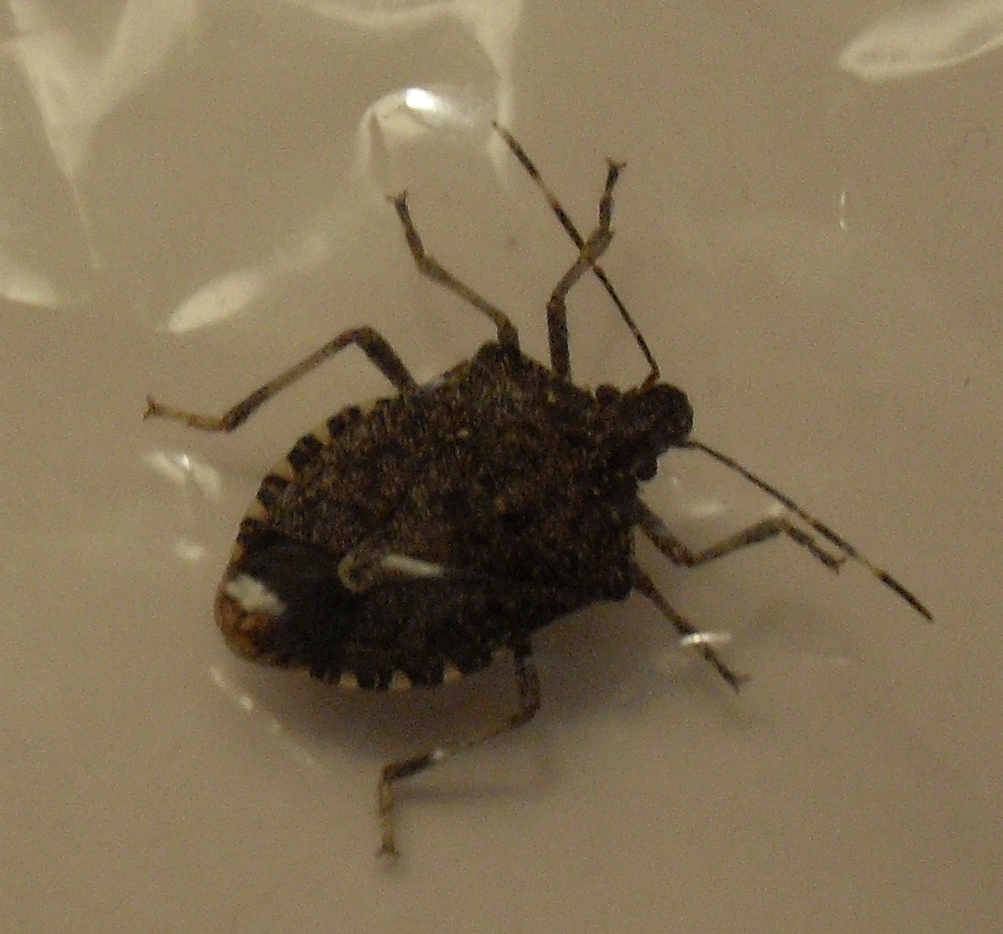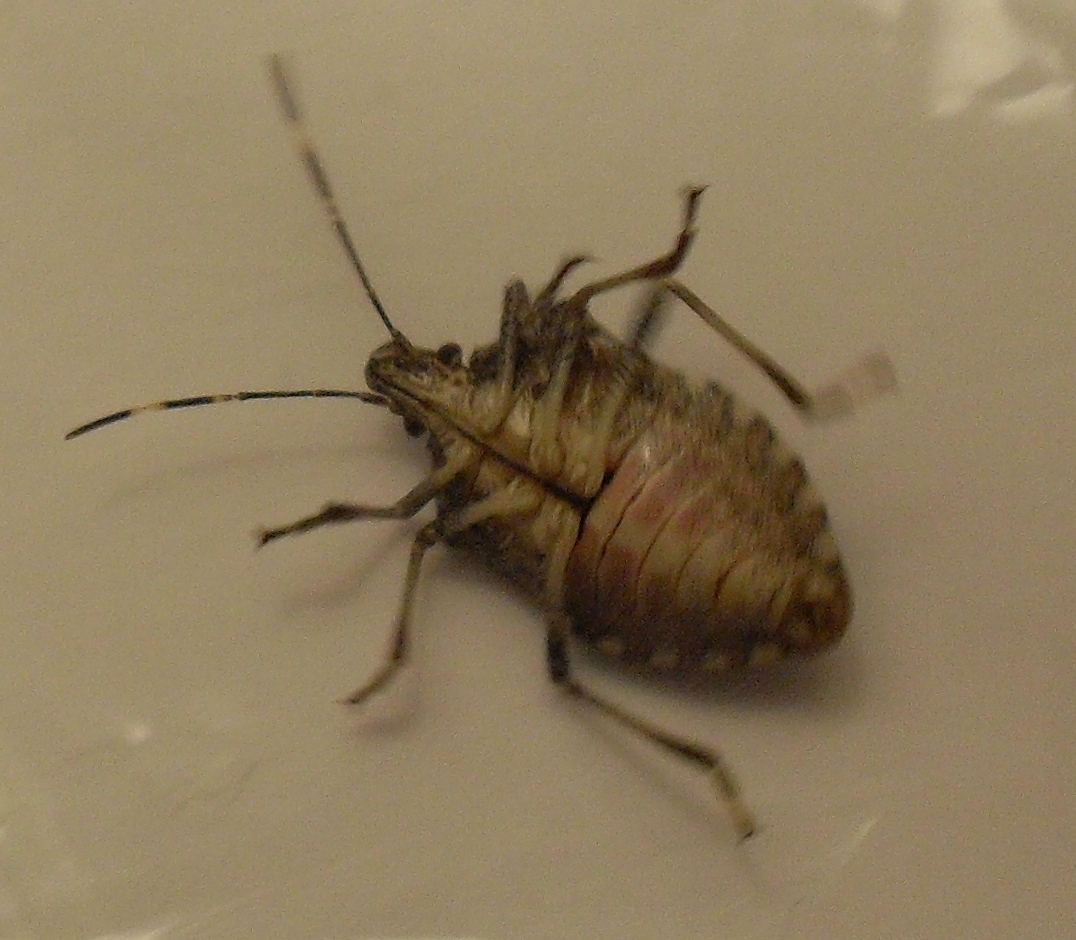Brown Marmorated Stink Bug (Halyomorpha halys) on Jan 5, 2010
Submitter has sample
Description of specimen
This is the third one I've found in my apartment in the last three months. The previous two I just got rid of quickly by using the attachment wand to suck it into my vacuum like I do with spiders. For this one, I knocked it into a plastic zipper storage bag two days ago so I could eventually identify it on the internet. I grew up in the Midwest and had never seen anything like it before so I thought it might be specific to the Pacific NW. After searching the internet I found out it was an invasive species. See the attached closeup photos. It is still moving around in the plastic zipper bag after being locked in there for two days.



Reporter
Jan. 5, 2010, 4:03 p.m.
Unfortunately, this invasive species has become established in the Portland metropolitan area. This bug is native to Asia, but is known to be established in Pennsylvania, New Jersey, and Oregon. Hosts include maple, serviceberry, birch, butterflybush, pepper, pecan, catalpa, hackberry, redbud, citrus, dogwood, cucumber, fig, sunflower, honeysuckle, tomato, apple, plum, pear, rose, lilac, linden, viburnum and grape. Adults emerge from overwintering in April. Eggs are 1/16 of an inch, pale green and laid from June to August. Most egg masses have about 25 eggs. The nymphal stages do not have developed wings. Size ranges from 1/8 to 3/4 of an inch as the insect grows and molts. Nymphs are first red, turning almost black, and then finally becoming brown as adults. They are the typical "shield" shape of other stink bugs, almost as wide as they are long. Injuries caused by feeding produce small necrotic areas on the outer surface of fruits and leaves. Scarring is common on fruits such as apple and peach. Other plants may have roughly circular stippled areas about 1/8 inch wide. Only one generation has been observed; however, there are likely to be multiple generations as it spreads south. Adults begin overwintering at the end of September and become a nuisance as large numbers congregate and invade buildings in search of overwintering sites.
You can read more about this invasive species at http://www.invasive.org/species/subject.cfm?sub=9328
You asked if you should inform your management company about this, and if this is something your landlord should be worried about. This species is more of a nuisance than anything - removing them with the use of a vacuum cleaner is way to lessen the nuisance.
Thank you again for your report!
Lisa DeBruyckere
Jan. 5, 2010, 10:23 p.m.